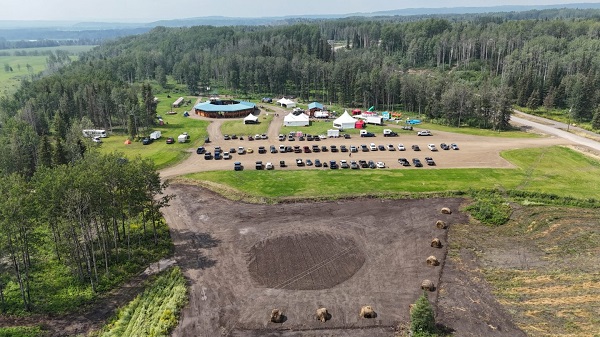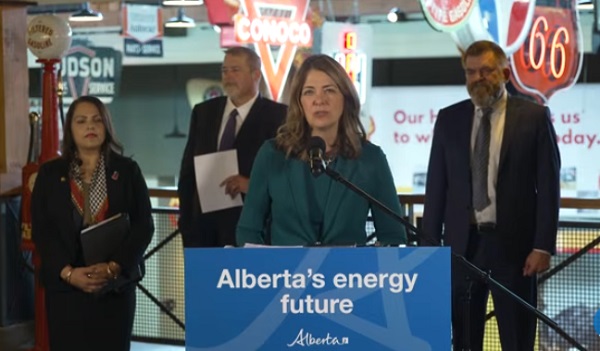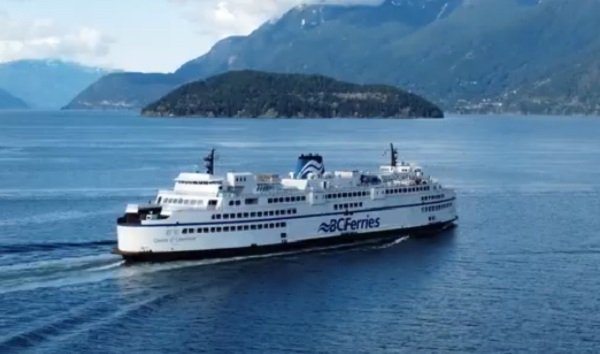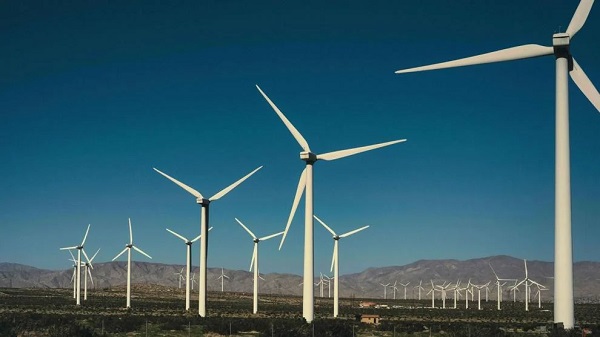Energy
How global warming saves more people than it dooms

From Energy Talking Points by Alex Epstein
This is Part 3 of a 4 part feature where I cover 4 of the top energy issues that will be discussed this summer, especially as politicians return home for August Recess.
Warmer temperatures are less of a threat than cold ones, and fossil fuels make us safer from both.
- Anti-fossil fuel politicians love summer because hot temperatures give them the opportunity to portray the world as “on fire”—and offering anti-fossil-fuel policies as a solution.In reality, cold is a bigger problem than heat—and anti-fossil-fuel policies make both worse.¹
- Anyone commentating responsibly on summer temperatures must acknowledge 3 facts:1. Heat-related deaths are far less prevalent than cold-related deaths
2. Earth is warming slowly—especially in warm places
3. Fossil fuels make us safer from both cold and heat
- 1. Heat-related deaths < cold-related deaths
When our leaders discuss the warming of the planet, they treat warming as obviously bad. But while they portray the planet as already “too hot,” the fact is that far more human beings die of cold than of heat.²
- Study after study has found that deaths from cold outnumber deaths from heat by 5-15 times. On every continent cold is more dangerous than heat. Even in many countries we think of as especially hot, such as India, cold-related deaths significantly exceed heat-related deaths.³
- 2. Earth is warming slowly—especially in warm places
So far we’ve had ~1°C of warming from a cold starting point in Earth’s history 150 years ago. Future warming will be limited by the diminishing nature of “the greenhouse effect”—as well as being concentrated in colder places.⁴
- Warming so far has been slow and benign. But will future warming make the world unlivably hot? No, given 2 facts almost universally acknowledged by climate scientists: 1) the diminishing warming impact of CO2 and 2) the concentration of warming in colder places.
- The warming impact of CO2 diminishes (“logarithmically”) as it increases in concentration.Every new molecule of CO2 we add to the atmosphere has less of a warming effect than the previous one. Warming will diminish as emissions increase—the only question is at what rate.⁵
- Climate warming is concentrated in colder areas of the world (such as the Arctic), during colder times of day, and during colder seasons.This means that future warming will occur more in cold situations where it saves lives than in hot situations where it causes problems.⁶
- All reporting on the warming of the Earth should specify not only that humans are far more endangered by cold than by heat, but also that Earth is warming slowly—and less in warm places. That virtually no reporting acknowledges this shows that much “reporting” is propaganda.
- 3. Fossil fuels make us safer from dangerous temperatures
Not only is the warming from fossil fuels’ CO2 emissions slow and in many ways beneficial, the uniquely cost-effective energy we get from fossil fuels makes us both safer from cold and heat.
- The key to being protected from dangerous temperatures is to master them by producing different forms of temperature protection, such as: insulated buildings, heating, and air-conditioning. All of these things require energy—which means for most people they require fossil fuels.
- Fossil fuels are the only source of low-cost, reliable energy that for the foreseeable future can provide energy to billions—in a world where 3 billion people still use less electricity than a typical American refrigerator.⁷
- On a planet where people die much more from cold than from heat, but both are major threats, the key to safety is to have energy be as affordable and plentiful as possible so as many as possible can afford heating and air conditioning. For now this means more fossil fuels.
- People who blaming pro-fossil-fuel politicians for hot temperatures evade that:1. Cold is more dangerous than heat
2. Warming is slow, especially in warm places
3. We need fossil fuels to protect us from cold and heat
- Reducing CO2 emissions in a humane and practical way means focusing on liberating alternatives—especially the most potent, nuclear—to try to truly outcompete fossil fuels in the future. Depriving us off fossil fuels now and pretending China will follow is immoral and impractical.
Popular links
- EnergyTalkingPoints.com: Hundreds of concise, powerful, well-referenced talking points on energy, environmental, and climate issues.
- My new book Fossil Future: Why Global Human Flourishing Requires More Oil, Coal, and Natural Gas—Not Less.
- Speaking and media inquiries
“Energy Talking Points by Alex Epstein” is my free Substack newsletter designed to give as many people as possible access to concise, powerful, well-referenced talking points on the latest energy, environmental, and climate issues from a pro-human, pro-energy perspective.
Economy
Reconciliation means clearing the way for Indigenous leadership

From the Resource Works team.
On Truth and Reconciliation Day, Canadians are asked to honour residential school survivors and to support the families and communities who must live with that history.
It also calls for action, not mere commemoration. The Truth and Reconciliation Commission called for structural change in Canada, and that means clearing the way for Indigenous leadership across this country.
Economic reconciliation is a practical journey that shifts decision-making and ownership towards First Nations and Indigenous people more generally.
Throughout B.C., First Nations are already practicing what that looks like. The Osoyoos Indian Band has built a diverse economy in tourism, wine, and recreation that has sustained steady jobs and revenue.
“I think all Native leadership need to get the economic development focus going on and make the economy the number one issue. It’s the economy that looks after everything,” Chief Clarence Louie has said. That sense of mission, along with assets like Nk’Mip Cellars and Spirit Ridge, has helped to turn Osoyoos into a B.C. success story.
On the coast, the Haisla Nation is leading in innovation in the LNG sector. In 2024, the Cedar LNG facility was granted a positive final investment decision, along with the Haisla’s majority ownership of the $4 billion project.
“Today is about changing the course of history for my Nation and Indigenous peoples,” said Haisla Chief Councillor Crystal Smith during the long approval process. By seeing the project through, Haisla ownership has created the means to fund language, health care, and opportunity for generations that had found all of that out of reach.
In the Lower Mainland, the Squamish Nation’s Sen̓áḵw development is one of the biggest projects in the Vancouver real estate market, and will become an asset for decades to come.
“This project is not just about buildings, it’s about bringing the Squamish People back to the land, making our presence felt once again in the heart of our ancestral territory, and creating long term wealth for the Squamish Nation,” said Council Chairperson Khelsilem.
The Squamish recently restructured the partnership so Squamish holds half of phases one and two and all of phases three and four, while welcoming OPTrust to a 50 percent stake in the early phases. Indigenous leadership is not just transforming the rural resource economy, but the urban one as well.
Chief Ian Campbell of the Squamish Nation, former chair of the Indigenous Partnerships Success Showcase event in Vancouver, has said that economic reconciliation is essential to the future of Canada.

“To move forward and reframe that complex dynamic, and put the lens on economic reconciliation, to me, is the path forward to create mutual benefits and values that benefit all Canadians, which includes Indigenous people,” said Campbell.
For governments and industry, there is a duty to align policy, permitting, and capital flows with Indigenous-led priorities. Beyond benefits agreements, reconciliation requires listening both early and attentively, and ensuring cooperation every step of the way.
The Bank of Canada itself has noted that “tremendous untapped potential exists”, but only when private firms and public agencies commit to economic reconciliation.
Listening also means resisting the temptation to cast Indigenous peoples as either monolithic supporters or opponents of development. Figures like Ellis Ross, former Chief Councillor of the Haisla, and his successor Crystal Smith have challenged these narratives, pointing instead to Haisla and neighbouring Nations’ experience with real jobs, careers, and community services tied to LNG and related infrastructure.
The Haisla message is straightforward: the path to revitalized language and culture runs through sustained opportunity and self-determination.
Truth and Reconciliation Day is a reminder that the past matters, and this is evident in the inequities of the present and in the possibilities now being realized by Nations that are reclaiming jurisdiction and building enterprises on their own terms.
Our task is to ensure public policy and corporate practice do not get in the way. On September 30, we remember, and then on October 1 and every day after, we have work to do.
Alberta
Halfway River First Nation makes history with Montney natural gas development deal

In northeast B.C., about 75 kilometres from Fort St. John, Halfway River First Nation sits in the heart of the Montney, one of North America’s largest natural gas plays. Photo courtesy Halfway River First Nation
From the Canadian Energy Centre
By Will Gibson
Greg Kist has seen plenty of change during more than three decades working in the energy industry. But the former executive with Petronas and Progress Energy has rarely experienced a history-making moment.
That happened in July 2024, when the B.C. government awarded the Halfway River First Nation what’s known as oil and gas tenure in the heart of the Montney play.
It’s an agreement that grants the Nation decision-making authority over the exploration and development of petroleum and natural gas resources on more than 34,000 hectares of Crown land in its traditional territory, located approximately 1,000 kilometres northeast of downtown Vancouver.
That agreement is now moving further into action with a deal between Halfway River-owned Tsaa Dunne Za Energy (TDZE) and ARC Resources.

Members of the Halfway River First Nation participate in a field tour with the BC Energy Regulator in June 2025. Photo courtesy BCER
The agreement, signed earlier this year, will see TDZE work with Calgary-based ARC to develop about 25 per cent of the tenured land.
The region is adjacent to ARC’s existing Attachie natural gas operations, which are rich in high-value natural gas liquids.
The company describes Attachie as one of its most profitable assets, which can be expanded thanks to the TDZE agreement.
“This land was deferred from development for more than two decades while sitting in the premier natural gas play in North America,” says Kist, one of TDZE’s managing executives.
“Unlocking it will generate all kinds of economic activity and royalties for the B.C. government that help pay for schools and health care. But it will also generate the same benefits for the Halfway River First Nation.”
ARC plans to integrate the new areas using existing roads, pipelines and other infrastructure from Attachie.
Developing the land will still require consultation with the Halfway River First Nation.

Drilling in the Montney play straddles the border between northeast B.C. and northwest Alberta. Photo courtesy ARC Resources
“This is very much about Tsaa Dunne Za Energy delivering the best return on this particular asset for its shareholders, which are the members of the Halfway River First Nation,” Kist says.
In addition to granting tenure to develop oil and gas on the land, the B.C. government and Halfway River have implemented a landscape planning pilot to mitigate the impacts of development on the Nation’s Treaty 8 rights and manage potential cumulative effects of new development.
“The tenure award and landscape planning pilot will help to ensure that oil and gas development in these areas is sustainable and managed in accordance with the values of the Halfway River First Nation,” Chief Darlene Hunter said in a statement.
Kist sees the agreement as a template for other governments, energy companies and First Nations to follow.
“This has the potential to be the model for cooperative development so that we can develop resources in the right way that benefits governments, First Nations and industry. I’m proud to be a part of this because everybody involved wins from this.”
-

 Alberta1 day ago
Alberta1 day agoWith no company willing to spearhead a new pipeline under federal restrictions, Alberta takes the lead
-

 National2 days ago
National2 days agoCanada’s birth rate plummets to an all-time low
-

 espionage2 days ago
espionage2 days agoNorth Americans are becoming numb to surveillance.
-

 Alberta1 day ago
Alberta1 day agoHalfway River First Nation makes history with Montney natural gas development deal
-

 Crime2 days ago
Crime2 days agoPierre Poilievre says Christians may be ‘number one’ target of hate violence in Canada
-

 Business1 day ago
Business1 day agoElon Musk announces ‘Grokipedia’ project after Tucker Carlson highlights Wikipedia bias
-

 Alberta1 day ago
Alberta1 day agoTaxpayers: Alberta must scrap its industrial carbon tax
-

 Bruce Dowbiggin1 day ago
Bruce Dowbiggin1 day agoThe McDavid Dilemma: Edmonton Faces Another Big Mess









